“They had a fence that went all the way out in the water, seem like it was a chain link fence. It went out in the water, so even though you couldn’t go in on the white side, you couldn’t swim across there either because the fence went out into the water. If a Black person — accidentally or on purpose — swim over to the white area, they would throw rocks at ‘em or try to drown them…they wouldn’t let you go over there.” – Joseph Jones
(henceforth referred to as my father)
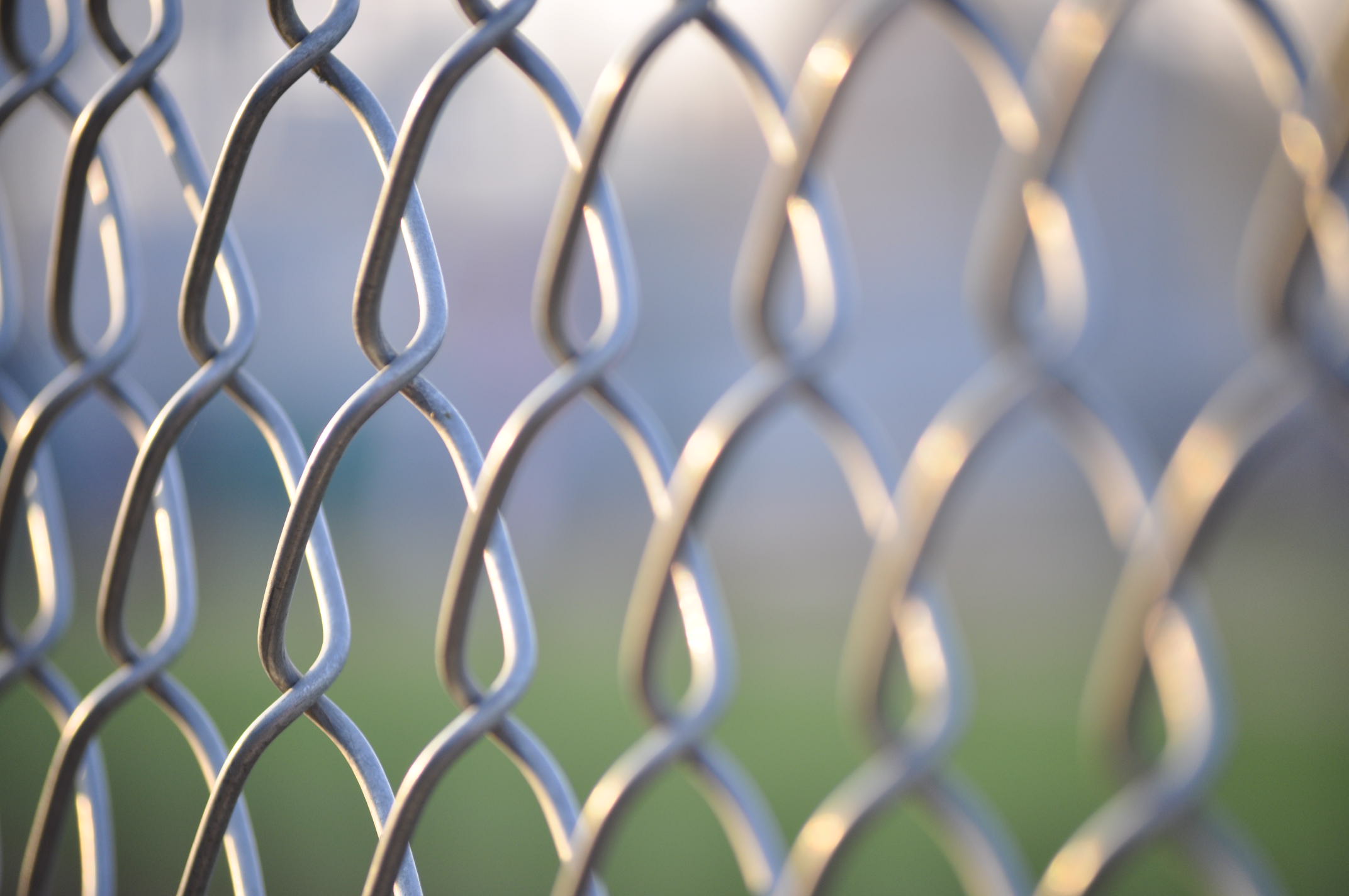
Chain link. Photo by mjaaaae on Flickr.
Born in South Shore in 1939, my father has spent his entire life just miles from Lake Michigan. He knows intricately the history of Jackson Park: having spent his childhood adventuring around the city’s unofficially segregated shores and the majority of his adult life enjoying them. But even at 83 years old, my father can still recall in vivid detail the lines that divided his youth on Chicago’s lakefront into Black and white.
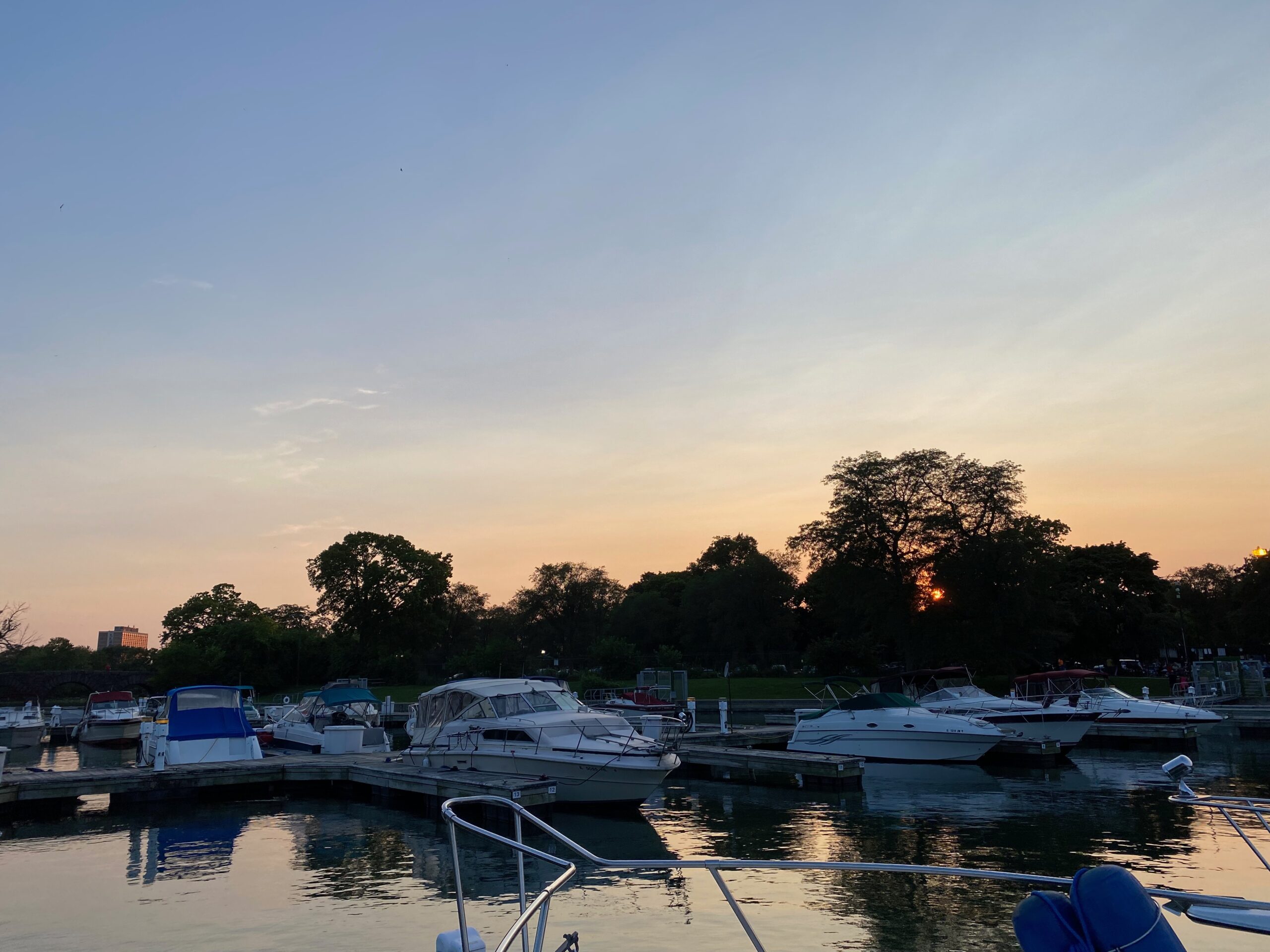
Sunset at 59th Street Harbor. Photo by Gena Jones.
A World of It’s Own
“I was maybe 8 or 9 years old,” he shares, “when a lifeguard in the neighborhood, Ralph Temple, would take all us kids over to the pier all the time, and he would teach us how to swim. Actually, it was to the little pier that we come out of — at our 59th Street Harbor.”
Beneath the 59th Street Bridge on Lake Shore Drive and tucked away between the Museum of Science & Industry and Wooded Island hides our 59th Street Harbor. My father’s boat, Pac-Man, has called this small corner of Jackson Park home for almost 40 years.
“I love it. You remember the sitcom TV show Cheers? Okay well, the song, to me, seems like it was written about 59th Street Harbor,” he starts to sing the ‘80s classic’s theme song, “Sometimes you wanna go, where everybody knows your name!”
Set inside the lagoons of the World’s Columbian Exposition of 1893, our little harbor of 125 slips has been an almost completely Black community for decades now. We are a close-knit group, based in the Museum Shores Yacht Club that was no more than a tool shed when long-time harbor master Maynard Welch began docking there in the late ‘60s.
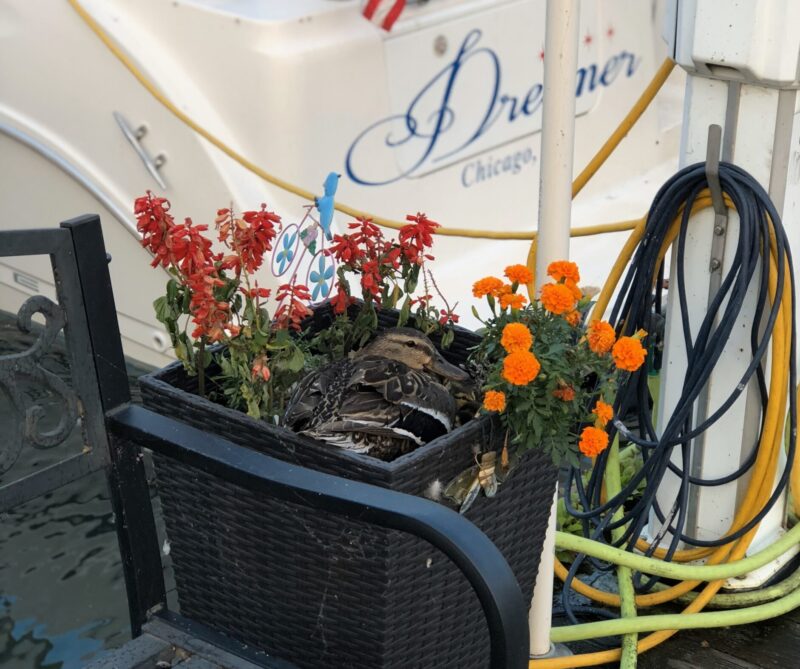
Duck at home at 59th Street Harbor. Photo by Gena Jones.
Since then, 59th Street has become a world of its own.
Crowds of Chicago’s steppers gather to its lawns and in the clubhouse to dance every summer. Time starts to work a little bit differently around May; a quick walk from your boat to the car turns into thirty minutes when you’re passing old friends every time you leave, and one hour on the lake could turn into the vow of a lifetime. People are called by the names of their boats, and families celebrate milestones together on its banks. 59th Street is a world where Black joy is allowed to grow unbridled — a space for laughter and leisure built upon shores that bear a painful history of racism.
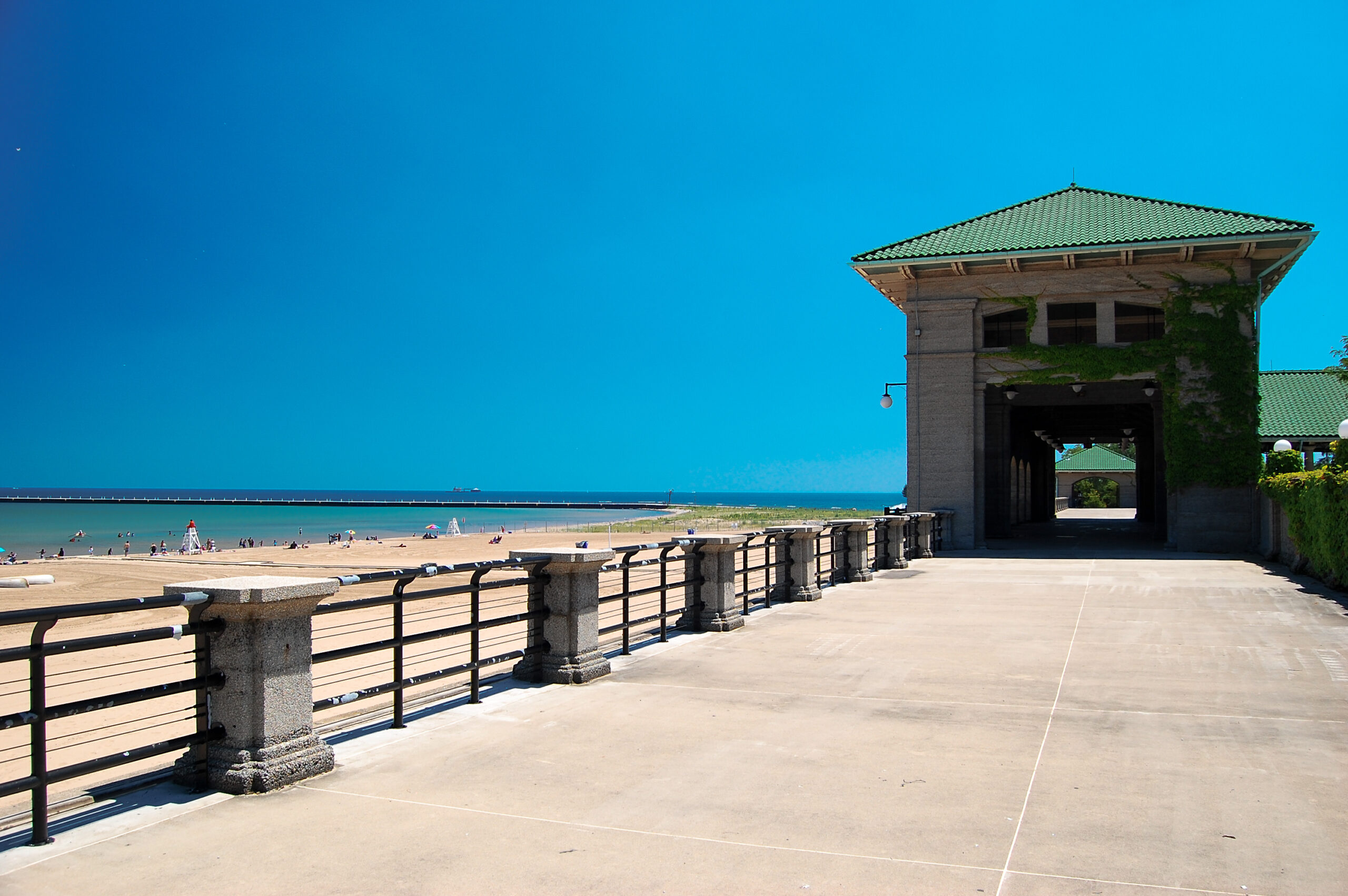
63rd Street Beach House (built 1917). Photo by Eric Allix Rogers on Flikr.
A History of Racism
“The world, Chicago, everywhere — it was very racist then… and 63rd Street [Beach] was really mean,” my father recalls. “They had a fence that went all the way out in the water, seem like it was a chain link fence. It went out in the water, so even though you couldn’t go in on the white side, you couldn’t swim across there either because the fence went out into the water. If a Black person — accidentally or on purpose — swim over to the white area, they would throw rocks at ‘em or try to drown them…they wouldn’t let you go over there.”
He pauses for a moment.”They really didn’t allow Black people to go to 63rd Street Beach then, except right there on the very edge. You remember that area, they put a swamp there?”
The swampy area he refers to is the farthest portion of 63rd Street Beach that I had come to know as ‘Treasure Island’. As a kid, I would swim up to the shore of Treasure Island and sift through the mixture of wood, seashells and glass to find the smoothest rocks (‘treasures’ in my 8 year-old eyes) and carry my spoils back to the Pac-Man. It was a small and heavily weeded sliver of the otherwise beautiful beach that was turned into a dune restoration site a few years ago. It was, in other words, an unforgettable eyesore.
He chuckles, “That’s where they would let Black people swim!”
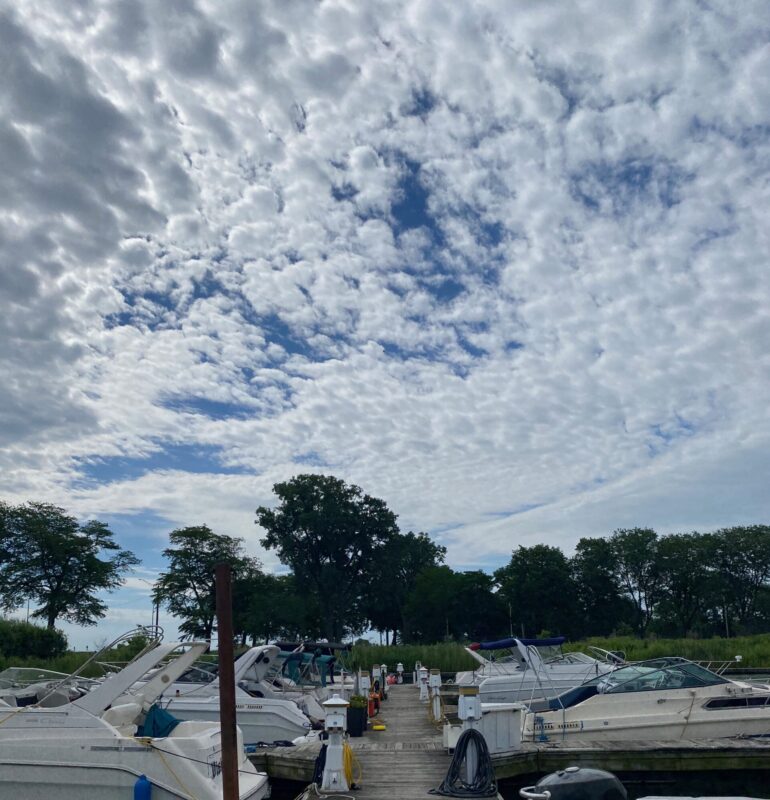
B-Dock at 59th Street Harbor. Photo by Gena Jones
The logistics of being Black on the lakefront were complex in 1960s Chicago. A few blocks to the North may have been a safe spot on a hot summer day, and a few more to the South could’ve landed you in deep trouble.
“[57th Street] was more populated by people who went to the University of Chicago, and they were more educated, you know, weren’t as racist,” my father recalls. “But there wasn’t no way in the world you’d go to Rainbow Beach. Rainbow Beach was all white.”
Just to the south of the chain-linked 63rd Street shores, Rainbow Beach was known as the most segregated and violent sector of Chicago’s lakefront. In the 1950s, whites considered public beaches to be their own private preserve, a recreational haven away from evolving racial dynamics in the city. All that began to change when a local Reverend invited my dad’s neighborhood to join in on Chicago’s freedom wade-ins of the 1960s.
The Fight
The city’s lakefront, while legally a public space for all to enjoy, had long been unofficially segregated due to the aggression of racist white beach goers. Black residents looking for a fun way to spend the summer had to be prepared to face racial slurs, limited range, and potential physical danger if they wanted to enjoy the beach.
In the heat of July in 1961, Black Chicagoans were fed up with the way they had been pushed out of their own city’s lakefront.
“So, we were gonna go and integrate Rainbow Beach,” my dad remembers, “and we had to have the police there cause they would always beat up Black people that went to Rainbow Beach. So, they had Black police and white police there, and when white people tried something, they would – you know – beat ‘em up and put ‘em in the paddywagon, you know — ‘You can’t do that’, when they tried to jump on us.”
The plan to integrate was inspired by the sit-ins happening in Greensboro, NC at the time. The only difference in Chicago was the police department’s attendance. After seeing the intensity of violence directed at the earlier August wade-ins, the city’s police force came out to supervise activists during the remaining protests of the summer.
“Well, we went — I was scared to death. I didn’t want to do it, you know. [The Reverend] was so determined to do it and he had all these people that were gonna do it, too, and I went with ‘em,” my father reflects. “But I was scared, I mean, it was so much tension. And it was on the Fourth of July, and so some white people was shootin’ off firecrackers that made it sound like gunshots, and so that really made tensions a lot worse.”
He had every reason to be scared. Velma Murphy-Hill, leader of the August wade-ins, was still in recovery after being hospitalized for her injuries after having been struck with a brick by an angry racist mob.
“But when we finally integrated Rainbow Beach,” he says, “then white people just quit going completely, you know. Like everything else, you know. Black people start coming then the white people quit coming.”
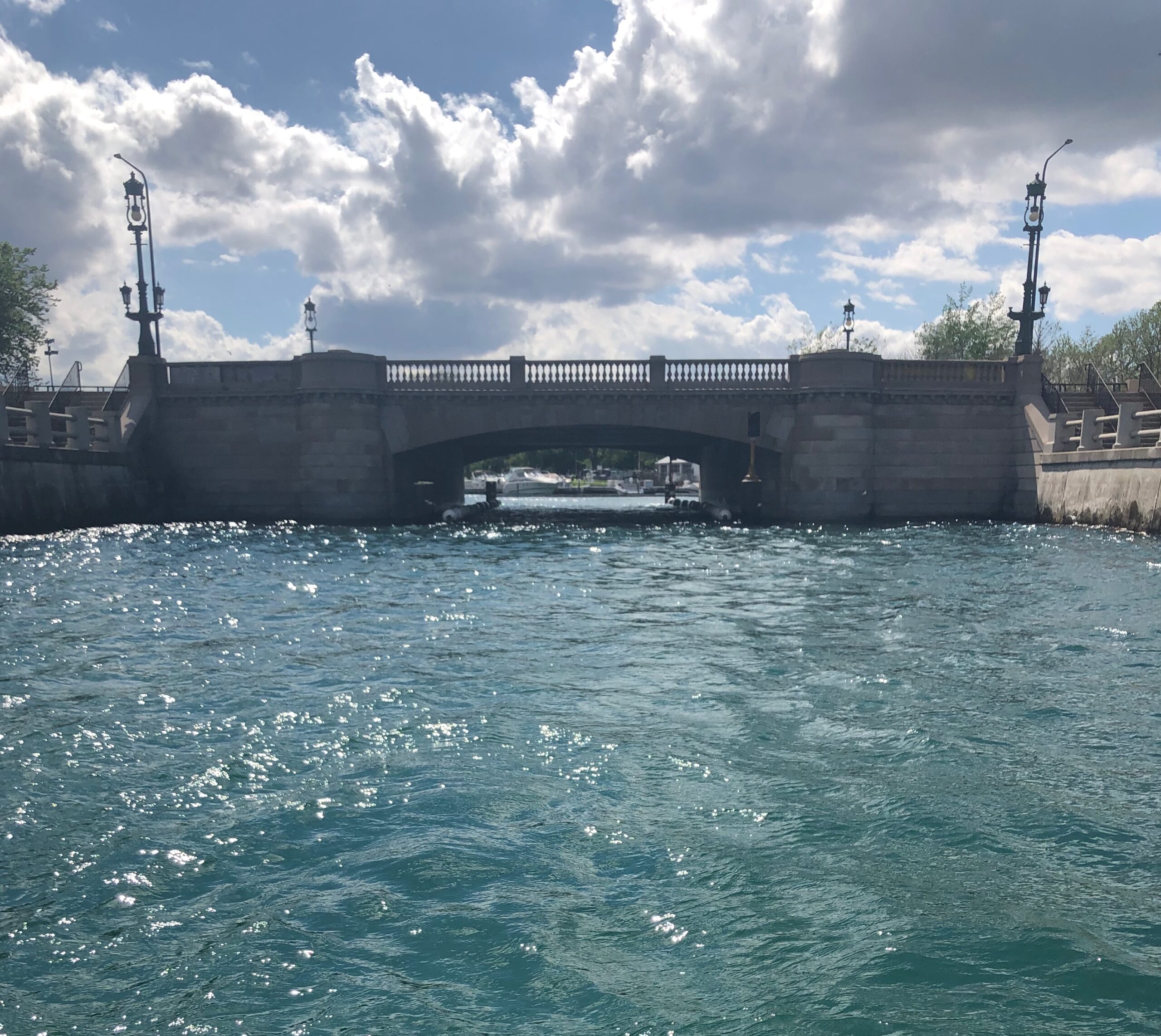
59th Street bridge: the entrance to our harbor. Photo by Gena Jones
The Flight
Welch recalls a similar abandonment upon his arrival at 59th Street. “When I came in ‘67, me and my buddy Dr. Holman (an African-American dentist) asked to join the Museum Shores Yacht Club. They said, ‘Sure. We’ll let you join.’ So we paid our $12.75, but the next meeting, nobody showed up but the two of us. They never came back.”
White flight in response to integration has always played a part in shaping the city’s lakefront neighborhoods. Residential development in the South Shore area began shortly after the World Columbian Exposition of 1893’s nearby creation of Jackson Park. But the more that people of color moved in, the more white residents began to move out.
South Shore, which was 90% white at the time of the wade-ins in 1960, is now 93% black. 63rd Street’s chain link fence was taken down, Rainbow Beach was integrated by the bravery of young Chicago activists, and now, the southern end of the city’s lakefront cools off almost entirely black crowds each summer.
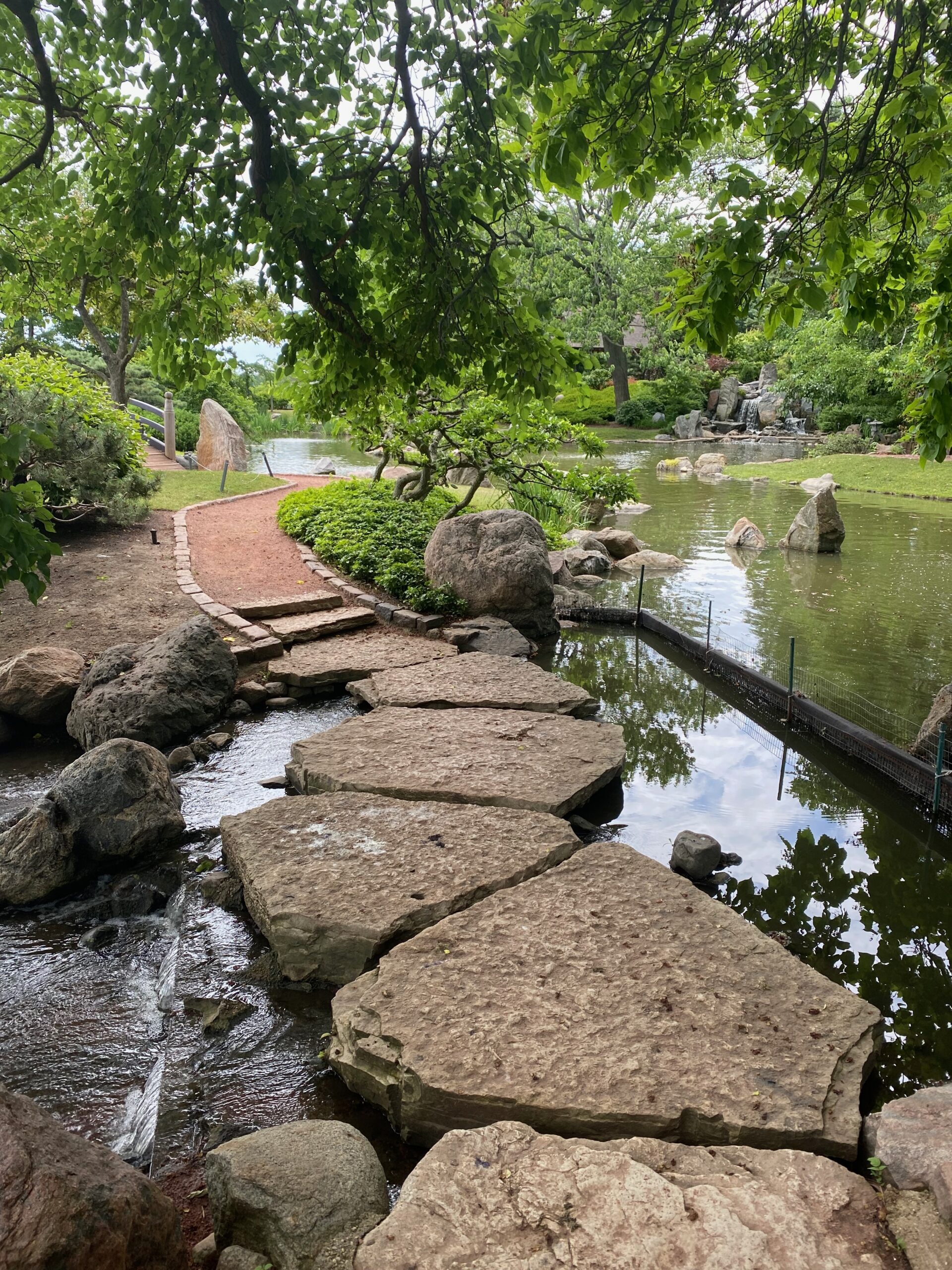
The Osaka Garden of Wooded Island. Photo by Gena Jones.
The Fun
“It’s a beautiful secret here,” says Welch.
59th Street is one of the only Black public spaces of its kind. Due to historical racial discrimination and redlining, people of color in general are three times more likely to live in areas far from nature. This geographic disconnect has caused an unease in many Black people who are interested in spending more time outdoors.
“Black people and other people of color have to think really hard about being in outdoor spaces and being seen as out of place,” shares Myron Floyd, Dean of the College of Natural Resources at North Carolina State University, “because the white majority can perceive people of color to be out of place in outdoor spaces.”
Black public spaces like the ones found in and around Jackson Park provided a remedy for this unease. There is a communion to be found within places where we can expand our horizons uninhibited by the stereotypes that occupy daily life.
For forty years, 63rd Street Beach’s Drum Circle has met in the beach’s parking lot everyday to perform with a tight knit circle of artists and dancers. Crowds of people gather around at community barbecues on the weekend, and if you’re lucky you might even catch Gele Day at the beach, a spiritual bonding event for African women in Chicago. Sunrise Services with local Pastor John F Hannah are also known to bring out hundreds from Chicago’s faith communities to worship on the beach at 5:00 a.m.
Despite its past, the black community has completely embraced the lakefront that spent years pushing them out. What used to be one of the city’s most highly segregated areas has now become a never-ending celebration for Black culture and community-bonding.
“I wouldn’t leave here to go to heaven,”my dad laughs, thinking back on his four decades at 59th Street.
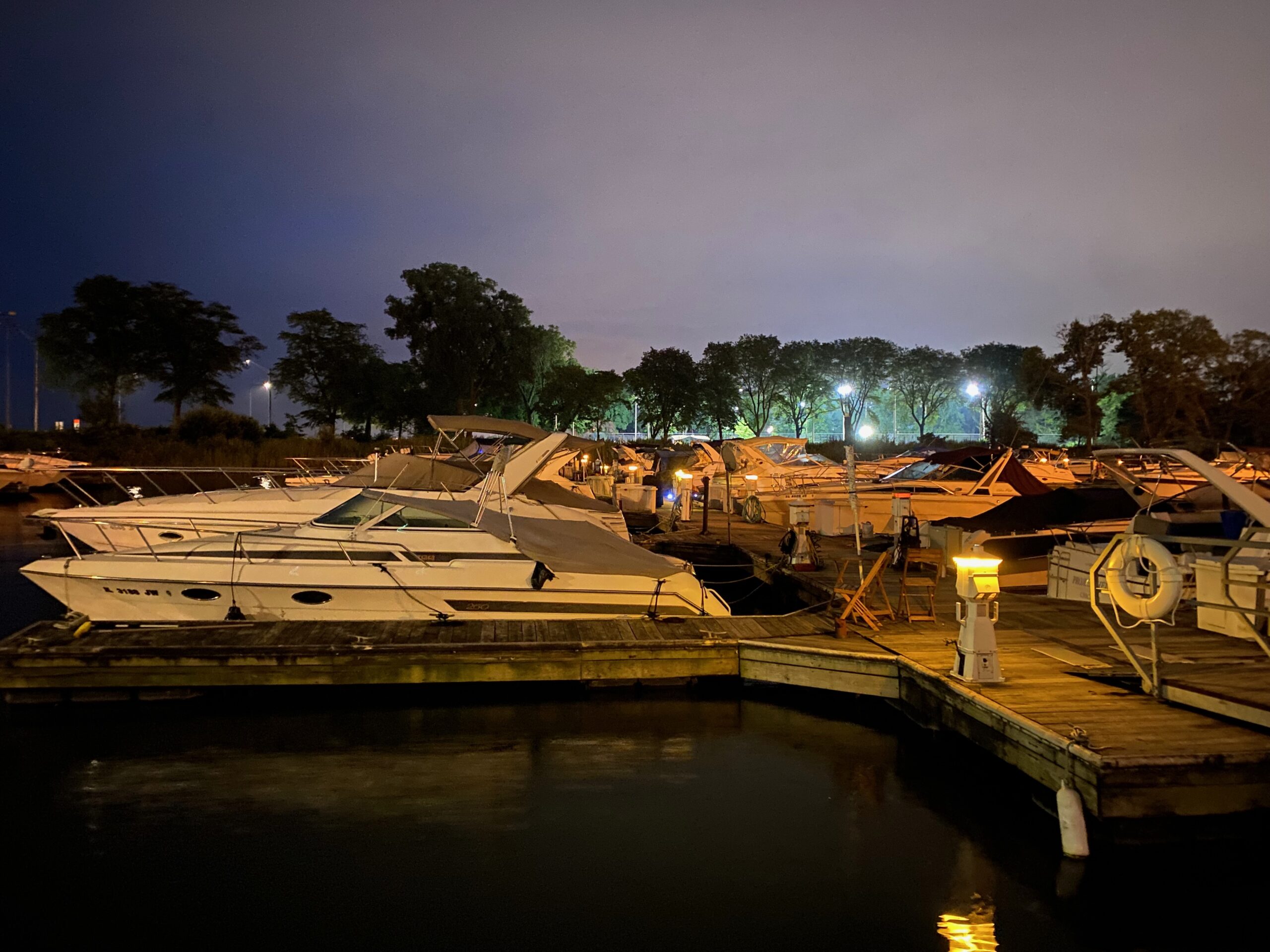
59th Street Harbor at night. Photo by Gena Jones.
Preserve the Black Space
In a city where Black households have just one penny for every dollar of wealth accumulated by white families, the need for equity has surpassed mere attempts at closing the racial wealth gap. 53% of the South Side’s Black residents report having known someone who was a victim to gun crime in recent years. 50% feel they have been treated unfairly at businesses and restaurants, and 40% believe they have been passed over for a job due to their race. Almost 66% of Black residents say they would move out of the city if they could afford to.
The preservation of Chicago’s black communities demands its own spaces. When we build our own spaces, regardless of the histories beneath us, we reclaim our right to exist as a people beyond the marginalization we feel everywhere else in society.
“When people of color are together, there can be healing,” writes journalist Kelsey Blackwell. “We can reclaim parts of ourselves that have been repressed. We can redefine ourselves and support one another in embracing who we are.”
Black spaces are not exclusive utopian paradises. They are simply areas in which we, as a community, can reclaim what has been stolen from us by the harmful implication that all spaces exist as inherently white spaces.
 NOLAbeings
Multimedia artist Claire Bangser created NOLAbeings as a portrait-based story project that marries...
NOLAbeings
Multimedia artist Claire Bangser created NOLAbeings as a portrait-based story project that marries...
 Data corner: Adobe Suite (create a PDF, social media graphic, presentation, edit a photo and video
Data corner is where you go to work with analytics and top tech skills. It takes on everything from PERL and SQL to Canva and Sprout Social.
Data corner: Adobe Suite (create a PDF, social media graphic, presentation, edit a photo and video
Data corner is where you go to work with analytics and top tech skills. It takes on everything from PERL and SQL to Canva and Sprout Social.

You feel as though you’re in a real Escape Road runaway chase with little time to slow down because of the car’s steady speed.
One thing I really appreciate about moto x3m is its simple yet clear interface. It keeps the focus on the action without any unnecessary distractions.
The Melbet mobile app makes sports betting even more convenient! With it, you can quickly place bets, track results, and access all https://melbet-nz.nz/en/mobile features right from your phone. Keep the excitement at your fingertips and enjoy the game anywhere!
With Black households holding slope run just one penny for every dollar owned by white families, the systemic inequalities are glaring. This economic disparity is compounded by social issues; 53% of Black residents on the South Side have experienced or know someone affected by gun violence, underscoring a community grappling with safety and security concerns.
The preservation of Chicago’s black communities demands its own spaces. When we build our own spaces, regardless of the histories beneath us, we reclaim our right to exist as a people beyond the marginalization we feel everywhere else in society. Play game uno online free.